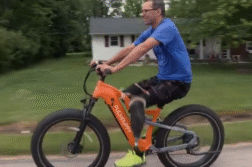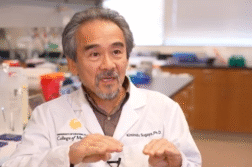ORLANDO, Fla. (Ivanhoe Newswire) — Autism is a complex developmental disorder that affects a child’s ability to communicate and interact with others. Most kids with autism are diagnosed after age four, but new research shows parents and doctors may be able to spot autism much sooner. And, when it comes to an autism diagnosis as with so many other things: the earlier, the better!
The numbers are alarming: one in every 59 children is diagnosed with an autism spectrum disorder. While there’s a lot scientists don’t know about this common condition, there’s one thing they do: diagnosing and treating it early does improve outcomes. That’s because from birth to age three, the human brain has the most neuroplasticity.
Christopher J. Smith, PhD, SARRC V.P. and Research Director says, “That means that their brain is the most flexible it’s ever going to be for learning and developing new skills.”
It’s at this time that therapies are most effective. Recent research has shown an autism diagnosis can be made as early as 14 months of age. Still, about half of young children who are referred for an autism diagnosis are put on a “watch-and-wait” list, which means their treatment will be delayed many times for years. Some early signs to watch out for in babies: not making eye contact, not responding to their name, repeating certain actions again and again, unusual emotional responses, and one more that parents often overlook …
“Their report about them when they were a baby is they were such a good baby. They could play alone for so long. Well, that’s not what a typically-developing baby should be doing,” continued Smith.
The best advice for parents: if there are any red flags, talk to your doctor about an evaluation and push for an early diagnosis. It could make a difference down the road.
Experts are divided on exactly when to start screening children for autism. The American Academy of Pediatrics recommends screening start at 18 months. But the U.S. preventive services task force says there’s insufficient evidence to recommend universal screening before age three. New research at Stanford suggests technology could alleviate the bottleneck in autism diagnosis around the world. Using artificial intelligence, they can analyze short home videos of children playing and interacting with others to distinguish autism from other developmental delays with 85 percent accuracy.
Contributors to this news report include: Julie Marks, Field Producer; Roque Correa, Editor.
SPOTTING AUTISM EARLY
REPORT #2675
BACKGROUND: Autism, or autism spectrum disorder (ASD), refers to a broad range of conditions characterized by challenges with social skills, repetitive behaviors, speech and nonverbal communication. Autism currently affects an estimated 1 in 59 children in the United States according to the Centers for Disease Control. There are many subtypes of autism, most influenced by a combination of genetic and environmental factors. Because autism is a spectrum disorder, each person with autism has a distinct set of strengths and challenges. The ways in which people learn, think and problem-solve can range from highly skilled to severely challenged. Autism can be reliably diagnosed as early as age 2, but most children are still being diagnosed after age 4. Boys are four times more likely to be diagnosed with autism than girls and it affects all ethnic and socioeconomic groups. Minority groups tend to be diagnosed later and less often. Early intervention means the best opportunity to support healthy development and deliver benefits across the lifespan. There is no medical detection for autism.
(Source: https://www.autismspeaks.org/what-autism and https://www.autismspeaks.org/autism-facts-and-figures)
EARLY DIAGNOSIS: According to the American Academy of Pediatrics, pediatricians should screen babies and young children for developmental delays at every checkup. Many of these delays, including language and social delays, can be identified at 18 months, if not earlier. Studies demonstrate that behavioral signs begin to emerge as early as 6 to 12 months. However, autism symptoms continue to emerge, or fade away, until around 24 months. Many high-functioning children with autism aren’t diagnosed until they enter school and start struggling socially. Children who receive autism-appropriate education and support at key developmental stages are more likely to gain essential social skills and react better in society. Parents of autistic children can learn early on how to help their child improve mentally, emotionally, and physically throughout the developmental stages with assistance from specialists and organizations. The strain of caring for an autistic child can be an everyday challenge, but with early preparation and intervention, parents can prepare themselves for the road ahead emotionally and mentally.
(Source: https://www.autismspeaks.org/expert-opinion/how-early-can-autism-be-diagnosed and https://myasdf.org/media-center/articles/early-intervention-makes-a-huge-difference-for-autistic-children/)
NEW FINDINGS IN SOCIAL BEHAVIORS: Researchers have found a direct neural connection from the cerebellum to the ventral tegmental area (VTA) of the brain, which is an area known to be involved in reward processing and encoding. “This type of research is fundamental to deepening our understanding of how brain circuit activity relates to mental illnesses,” said Joshua A. Gordon, MD, PhD, director of National Institute of Mental Health (NIMH). The cerebellum plays a well-recognized role in the coordination and regulation of motor activity. However, research suggests that this brain area contributes to a host of non-motor functions. For example, abnormalities in the cerebellum have been linked to autism, schizophrenia, and substance use disorders; and brain activation in the cerebellum has been linked to motivation, social and emotional behaviors, and reward learning, each of which can be disrupted in psychiatric disorders. The researchers used a technique called optogenetics, in which the neurons of animals are genetically modified so they can be controlled using pulses of light. The identification of this direct neural pathway may help explain the role of this circuit in disorders that involve reward-related and social-processing systems, such as addiction, autism, and schizophrenia, and may point to future targets for intervention and symptom management.
* For More Information, Contact:
Karen Scott
Free weekly e-mail on Medical Breakthroughs from Ivanhoe. To sign up: http://www.ivanhoe.com/ftk



